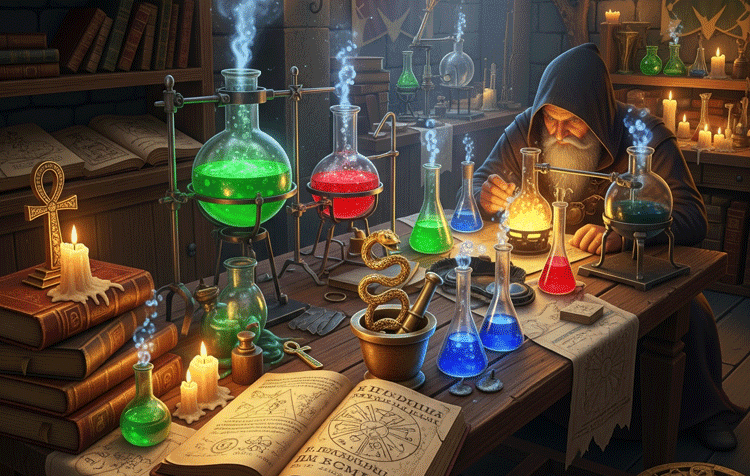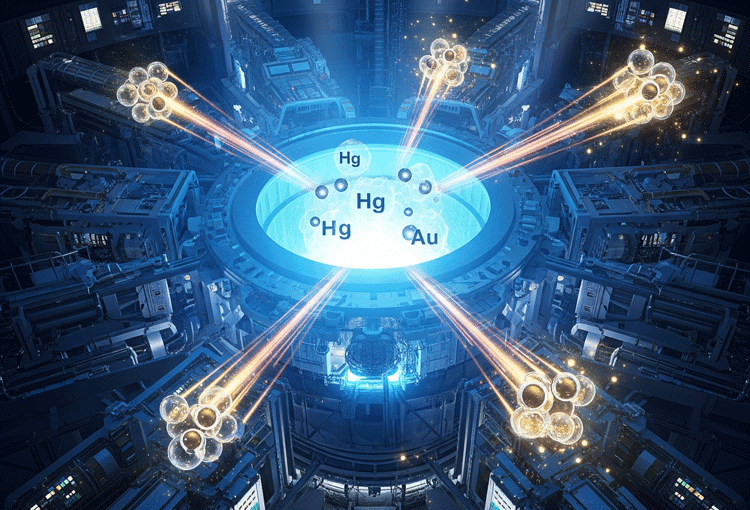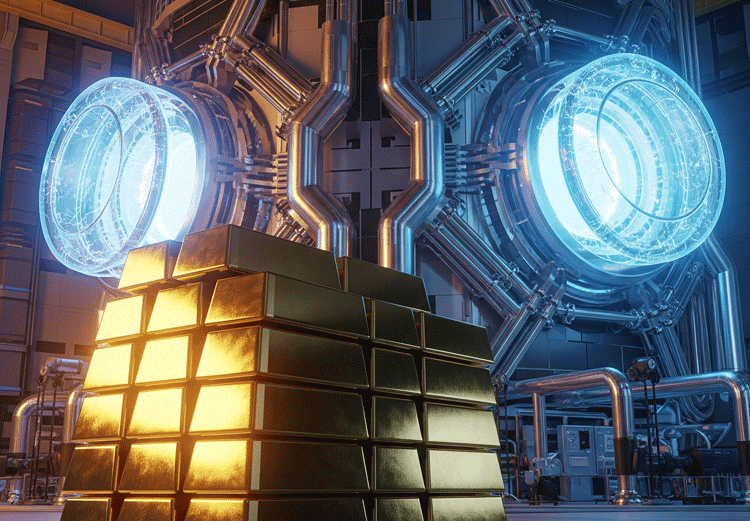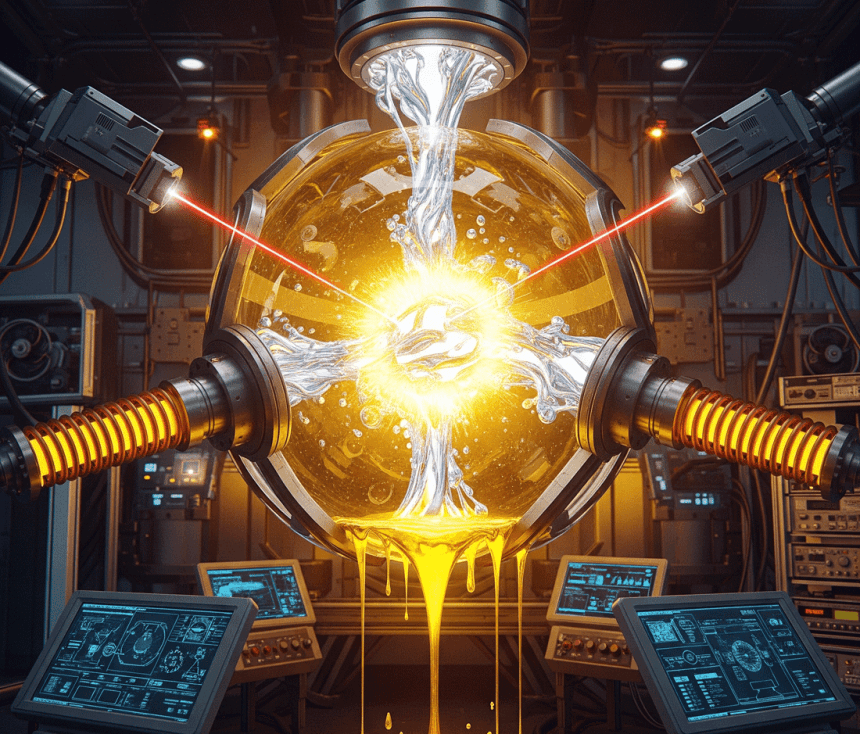For centuries, mercury into gold was a dream confined to legend and lore—an obsession of alchemists seeking to unlock the secrets of nature. From ancient scrolls to medieval laboratories, the idea of transforming ordinary metals into gold has fascinated humanity for generations.
Today, that ancient fantasy may be inching closer to reality. A Silicon Valley startup, Marathon Fusion, has unveiled a bold claim: using nuclear fusion technology, they believe it’s now possible to turn mercury into gold—not in microscopic lab samples, but at industrial scale.
Their approach combines cutting-edge reactor design with precise control of neutron reactions, potentially making gold a valuable byproduct of clean energy production.
It sounds unbelievable—but the science behind it is very real. Let’s explore how this once-mystical pursuit is being revived through the power of modern physics.
From Alchemy to Atomic Science: The Long Quest for Gold

The idea of turning mercury into gold isn’t new. It’s actually one of the oldest scientific fascinations in human history. For centuries, alchemists from China to Europe dreamed of turning mercury into gold, believing that base metals like mercury or lead could somehow be transformed into precious gold.
This belief wasn’t just mystical—it was based on the limited understanding of matter at the time. Without knowledge of atoms or elements, alchemists experimented with chemicals and heat, hoping their efforts would lead to turning mercury into gold and unlocking nature’s secrets.
Today, we know that turning mercury into gold isn’t about mixing potions but about changing the number of protons inside an atom’s nucleus. This process, called nuclear transmutation, is the real science behind how one element can become another.
While scientists have managed to demonstrate turning mercury into gold in particle accelerators and nuclear reactors, these attempts were mostly small-scale, costly, and inefficient. So although alchemists’ dreams weren’t impossible, their tools were far from what modern nuclear physics can offer.
However, recent advances suggest that turning mercury into gold could soon become more practical, opening a new chapter in this ancient quest.
A new claim by a U.S.-based fusion energy company suggests that mercury into gold transmutation might finally be scalable, using the intense power of nuclear fusion. Not only could this be scientifically feasible, but also economically rewarding, thanks to the massive energy and neutron output of next-generation fusion reactors.
The Fusion Breakthrough: How Mercury Becomes Gold
The process of turning mercury into gold might sound like ancient magic, but it’s based on well-understood principles of nuclear physics. At the heart of the claim lies an isotope of mercury—mercury-198. This particular form is stable, naturally occurring, and abundant.
In the method proposed by Marathon Fusion, mercury-198 is placed inside a component of a nuclear fusion reactor known as the breeding blanket. During fusion reactions, especially those involving deuterium and tritium, the system produces a huge number of high-energy neutrons. These neutrons interact with the mercury-198 atoms, knocking out particles and transforming them into mercury-197.
Here’s where it gets interesting: mercury-197 is unstable. Within a few days, it naturally decays into gold-197—the only stable and naturally occurring isotope of gold.

This process is called neutron-induced transmutation. It’s not entirely new. Scientists have observed similar element transformations in particle accelerators and nuclear fission environments. What makes this proposal different is scale. Instead of converting atoms one by one in a lab, the company suggests doing it in bulk, as part of normal reactor operations.
They estimate that a single gigawatt of fusion energy—the output of a large power plant—could generate up to 5,000 kilograms of gold per year. That’s roughly $550 million worth of gold, produced as a side effect of clean energy generation.
It’s a striking idea: what if our future power plants not only produced electricity, but also precious metals?
Economic Potential: Gold as a Byproduct of Clean Energy
Producing gold through fusion might sound like a futuristic bonus, but it could have serious financial implications. According to estimates from the Marathon Fusion team, one gigawatt of fusion power could yield around 5,000 kilograms of gold each year. That’s not just a science headline—that’s a potential revenue stream of over half a billion dollars annually.
What makes this even more remarkable is that the process doesn’t interfere with the primary goal of the reactor: energy generation. In typical fusion designs, high-energy neutrons are already absorbed in a surrounding blanket to help breed tritium, the fuel needed to sustain the reaction. The proposed method simply adds mercury to this setup, using neutrons that would already be generated as part of the fusion cycle.

In other words, gold becomes a secondary product of something we’re already trying to do—generate clean, limitless power. If proven viable, this could change the economics of fusion energy dramatically. Instead of relying solely on electricity sales, future fusion plants could also profit from transmuted elements, creating a new layer of financial sustainability.
This approach could be especially appealing in the early years of fusion deployment, when construction and operational costs are high. Gold production could help offset those costs, making fusion energy more attractive to investors and governments alike.
But before the gold rush begins, there are still scientific and engineering challenges to overcome. Let’s explore them next.
Can It Really Work? Scientific Doubts and Technological Hurdles
While the idea of turning mercury into gold using fusion is captivating, it’s important to remember that the concept remains unproven at industrial scale. The claims by Marathon Fusion are based on simulations and theoretical modeling. Their paper has not yet undergone peer review, which means the scientific community hasn’t had the chance to evaluate and verify the methodology behind turning mercury into gold through fusion.
Even if the physics holds up, the engineering challenges are significant. Fusion reactors are already among the most complex machines ever conceived. Adding a layer of mercury inside the breeding blanket would require extreme precision, both in design and containment, given the toxicity of mercury and the harsh conditions inside a reactor.
Another key concern is the efficiency of the reaction. While neutron bombardment can indeed trigger transmutation, not every interaction will produce gold. Some atoms may follow unwanted pathways, resulting in waste products or unstable isotopes that require careful handling.
There’s also the issue of scalability. Producing gold at a useful quantity means the system must operate continuously, with a stable supply of mercury, precise neutron control, and a mechanism for safely extracting and isolating the resulting gold. All of this must happen without disrupting the reactor’s primary role—generating power.
Finally, even if the process becomes technically feasible, questions remain about its impact on the global gold market. A sudden influx of synthetic gold could affect pricing, regulations, and economic stability, raising ethical and geopolitical questions.
In short, the science is promising, but the road from theory to practice is long and full of unknowns. Still, the possibility of turning mercury into gold through nuclear fusion is enough to spark imagination—and research.
Conclusion: A New Age of Alchemy, Powered by Physics
The dream of turning mercury into gold has fascinated humanity for thousands of years—once relegated to the realm of myths and magic. Today, thanks to advances in nuclear fusion technology, this ancient ambition is stepping out of legend and into the laboratory, and perhaps soon, into practical reality.
While significant challenges remain before this process can be scaled and commercialized, the very idea that clean energy production might simultaneously generate precious metals is a game-changer. It could transform fusion power plants from costly scientific endeavors into economically self-sustaining hubs of innovation and wealth.
If successful, this fusion-powered alchemy would not only rewrite the history of science but also reshape global markets and energy industries, opening new pathways for sustainable development.
For now, the world watches and waits—curious if the ancient art of alchemy will finally be realized by the precise science of the atomic age.
Source: Scalable Chrysopoeia via (n, 2n) Reactions Driven by Deuterium-Tritium Fusion Neutrons

















